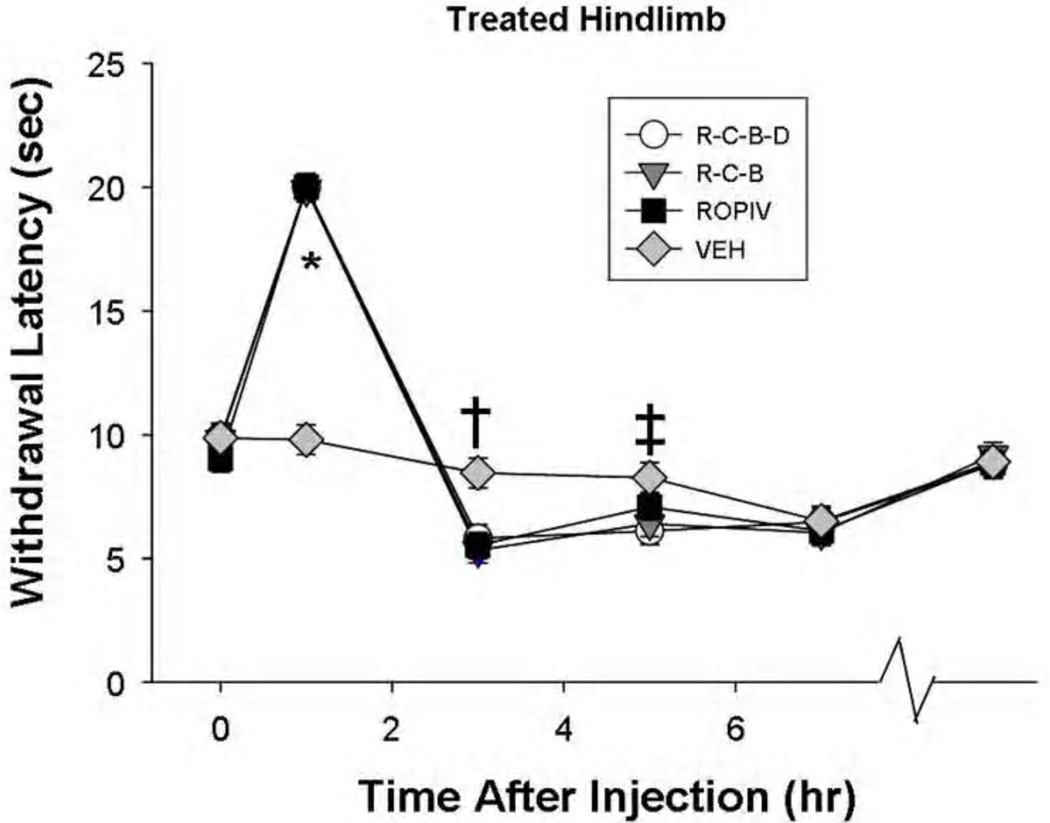Figure 1.
Heat anesthesia-analgesia followed by shorter heat withdrawal latencies after sciatic nerve block with ropivacaine. This is an illustration of nociceptive responses of the treated (left) hindlimb to thermal stimuli as a function of treatment and time (P<0.001). The last time point (on the X-axis) represents behavioral testing before rats were euthanized (postoperative day 12–14). The 3 ropivacaine groups showed anesthesia at 1 hr after injection (P<0.001), compared to the vehicle group VEH, followed by a shorter response latency to thermal stimuli (†P≤0.003) at 3 hr after injection. At 5 hr, the only significant difference between treatments was the R-C-B-D group having a significantly shorter thermal response latency than did the VEH group (‡P=0.016). There was no evidence of long-term thermal hyperalgesia. ROPIV: ropivacaine; R-C-B: ropivacaine – clonidine – buprenorphine; R-C-B-D: R-C-B plus dexamethasone.

